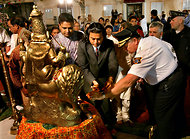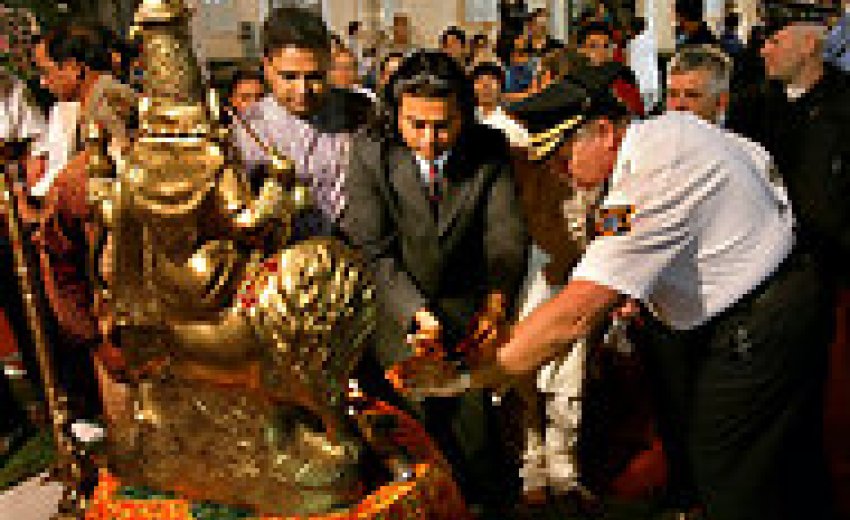That Indians have migrated far and wide for economic opportunities is well known. Yet, stories about specific communities of Indians making a home in a distant part of the world seem to have an enduring appeal. Last week, for instance, Twitter and Facebook accounts among readers in India and across the diaspora were abuzz after The New York Times published this story about a community of Sikhs who have migrated to northern Italy to work in its dairies.
 |
| Samuele Pellecchia for the International Herald Tribune Kuluant Singh during his work shift in the milking room at a farm in San Bassano, Italy. |
The story was only the latest in a series of such stories about the various ethnic Indian communities found in virtually all big, and many small, countries. The Times wrote about the Sikhs of Canada in this 2000 article. And let’s not stop at Sikhs. Tunku Varadarajan, the American journalist who himself was born in India, wrote about the Gujaratis who dominate the motel business in much of the United States in this long 1999 article in The New York Times Sunday Magazine.
Outside the Times, I found this Associated Press article from 2009 about the various Indian communities – among them Sikhs, Gujaratis and Tamils — in Bangkok, Thailand, which is where I lived from age 6 to 17. That piece said that “an estimated 140,000 of the city’s 10-plus million residents have roots in modern India.”
 |
| Richard Perry/The New York Times Navratri festival celebrations in Edison, New Jersey, USA in 2006. |
It’s not just journalists who are fascinated with Indian migrants. Writers like Amitav Ghosh — “Sea of Poppies” — have written many books on the subject and scholars have studied this migration extensively. The Indian diaspora is large in absolute terms – the government estimates it at 25 million people – but is just a tiny fraction of the overall Indian population of 1.2 billion. So, why are we so fascinated with Indian immigrants?
One explanation is purely economic: India receives more money in remittances from its migrant population — about $53 billion in the last fiscal year, or 3 percent of the gross domestic product – than any other country in the world, according to the World Bank.
 |
| Darryl Dyck/Associated Press A Sikh motorcycle group in a 9/11 memorial in Surrey, British Columbia, Canada on Sunday. |
Immigrants have also become important cultural ambassadors and advocates for India, whether they have done so consciously or by their simple presence in foreign countries. Some have described this as India’s “soft power.”
Another plausible explanation is that many writers and readers like feel-good — or conversely, tear-jerking — stories about migrants because many of us have been migrants ourselves or have a relative or close friend who is. We see ourselves in these stories. I know I do.
Perhaps, it is not surprising then that a new version of the old Indian immigrant story has caught the attention of reporters and editors: Indians are now returning to take advantage of the faster economic growth here, particularly in the information technology industry.
The BBC did a piece on this phenomenon last year. The year before, my colleague Heather Timmons wrote a piece that looked at the challenges that returning Indians face here.
Over the weekend, I had tea with a 30-something Mumbaikar, who grew up in India and went to college in the United States, who told me that he and some of his friends were thinking about selling their south Mumbai flats and moving to Los Angeles. By doing so, he said, they would cash in on high home prices here and take advantage of the weak housing market in California.
I imagine that over the coming years, there will be various permutations of the Indian immigrant story. We, or at least some of us, seem to be a restless lot.

